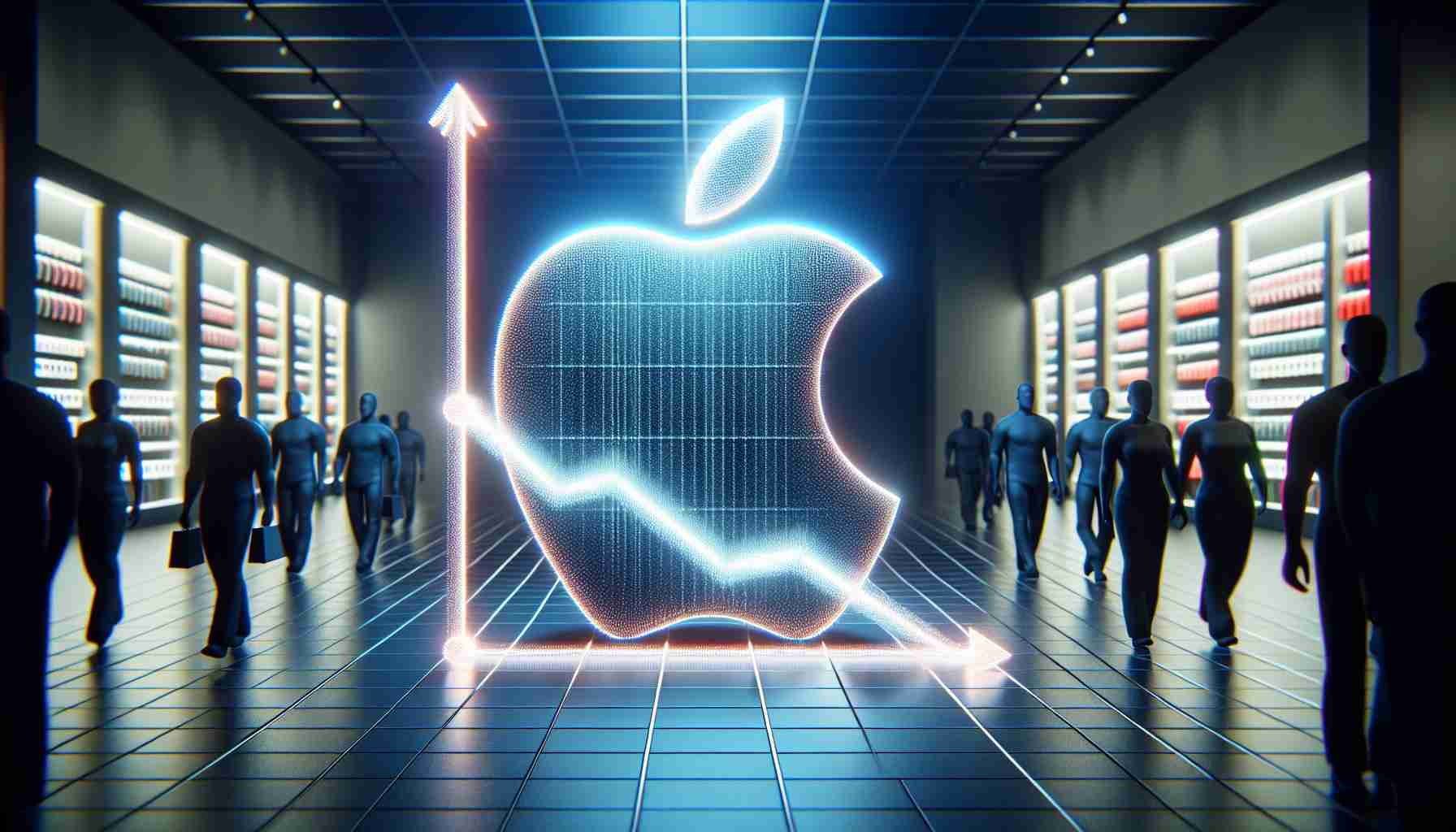Apple’s Pioneering Device Sees Diminishing Appeal
Initial enthusiasm for Apple’s cutting-edge spatial computing device, the Apple Vision Pro, has seen a downturn since its high-profile launch in early 2024. Once surrounded by a fervent buzz for its advanced capabilities, the interest in this $3,500 piece of technology is losing steam.
Analysts Express Concern Over Decreased Engagement
Tech industry experts point to a fundamental challenge that has long troubled virtual reality (VR) offerings: keeping users engaged. Mark Gurman of Bloomberg observes a significant drop in consumer interest, with some Apple stores reporting a stark reduction in both the bookings for product demos and the sale of the Vision Pro itself.
Marketing Efforts Intensify Amidst Sluggish Sales
In response to the sluggish demand, Apple has amped up promotional efforts, prominently featuring the Vision Pro on its website. Despite these endeavors, the device, positioned for individualistic use, such as during flights or remote work, still struggles to captivate the broader audience—a consequence of the product’s steep price, economic uncertainty, and the absence of “must-have” applications.
Technological Refinements Amidst Challenges
Apple remains diligent in refining the Vision Pro’s operating system, tackling early glitches and adding features like Spatial Personas to enhance the feeling of presence. However, such innovations hinge on a sizable user network which currently remains limited.
Conclusion
To turn the tide, Apple faces the significant challenge of not just advancing the Vision Pro technologically but also ensuring that VR becomes a staple in the realm of everyday technology, with a strong focus on user engagement and content that captivates and retains interest among consumers.
The waning popularity of Apple’s high-end spatial computing device, the Apple Vision Pro, underscores key challenges and controversies faced in the virtual and augmented reality (VR/AR) market. Below are some important questions and relevant information addressing these areas:
What are some of the potential reasons for the decreased interest in the Apple Vision Pro?
– **Price Sensitivity**: With a high price point of $3,500, the Vision Pro is significantly more expensive than many competitors, making it less accessible to a broader market.
– **Nascent Ecosystem**: A lack of compelling content and applications specifically designed for the Vision Pro may lead to diminished interest. Successful VR/AR devices rely heavily on a rich ecosystem of apps and experiences.
– **Market Saturation and Competition**: The VR/AR market features many players, and consumers might opt for more affordable devices with sufficient functionality.
– **Economic Factors**: In times of economic uncertainty, consumers tend to prioritize essential spending and may view high-end VR devices as luxury items.
What are some key advantages and disadvantages of Apple’s spatial computing device?
**Advantages**
– **Innovation**: Apple is known for its innovation, and the Vision Pro likely integrates cutting-edge technology in spatial computing and human-computer interaction.
– **Brand Loyalty**: Apple’s brand is strong, and its dedicated customer base might be more inclined to invest in its ecosystem.
– **Quality**: Apple products are often praised for their build quality and design, and the Vision Pro may benefit from this reputation.
**Disadvantages**
– **Cost**: The high price point is a significant barrier to widespread adoption.
– **Content Gap**: Without a vibrant range of applications or “killer apps,” high-end devices struggle to maintain user engagement.
– **Limited User Network**: Social applications of VR require a large user base to be most effective, and the Vision Pro’s limited adoption can hinder network-based features.
What are the main challenges or controversies associated with high-end spatial computing devices?
– **User Health and Safety**: There is ongoing debate around the long-term health effects of extended use of VR, including potential eyesight issues or motion sickness.
– **Privacy Concerns**: Advanced spatial computing devices that track user movement and behavior could present privacy risks that must be addressed.
– **Technical Limitations**: Issues such as latency, battery life, and graphical fidelity can detract from the user experience and pose challenges for manufacturers.
– **Social Impact**: Critics often express concern over the potential for VR technology to contribute to social isolation.
For those interested in exploring more about the broader landscape of virtual reality and augmented reality technology, the following links may be helpful:
– Apple – For official updates on the Apple Vision Pro and related services.
– Bloomberg – For business and technology news, including analysis by tech journalists like Mark Gurman.
– WIRED – For in-depth articles and commentary on the impact of emerging technologies, including VR/AR.
It is crucial for Apple, and indeed any player in the spatial computing market, to continually innovate while addressing the challenges of creating an immersive, engaging, and affordable experience for consumers.
The source of the article is from the blog bitperfect.pe
